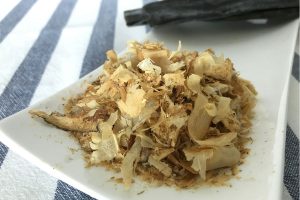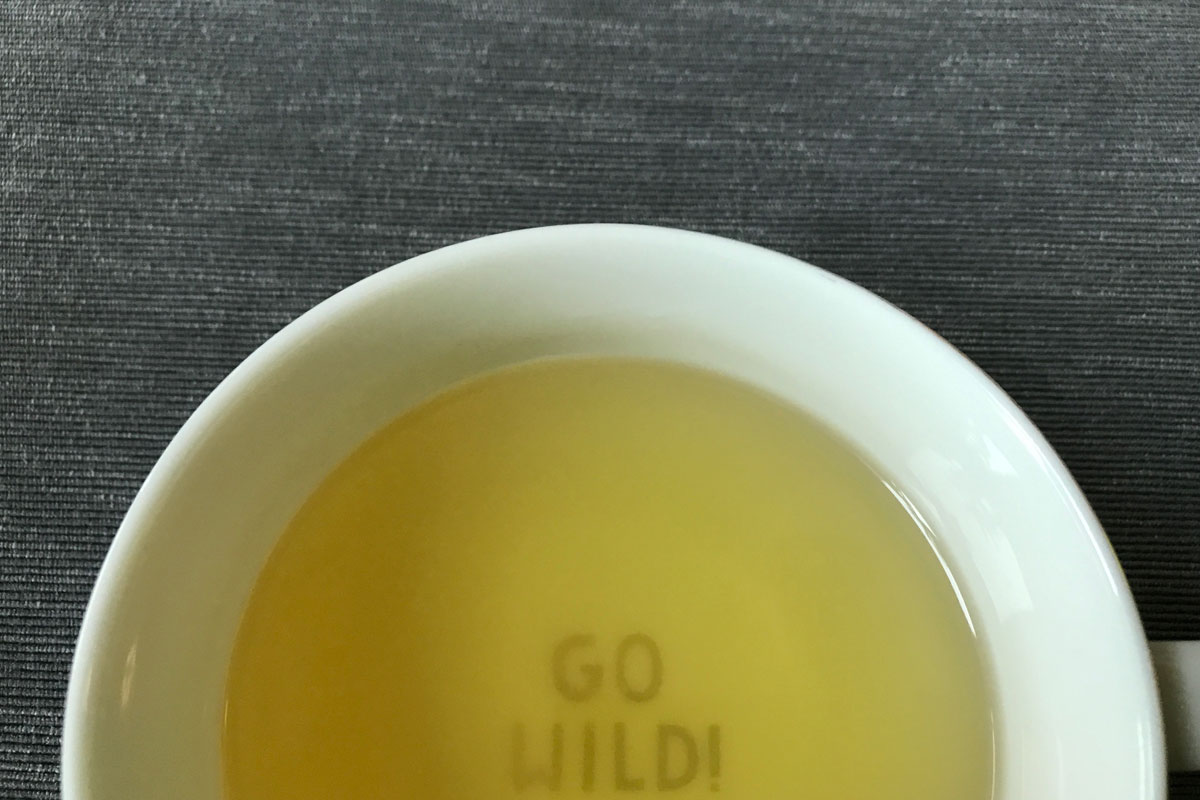Dashi, broth from Japan is a staple in the Japanese kitchen. The most simple, vegetarian version of dashi is kombu, sun dried seaweed or kelp, steeped in water. For a richer version use also katsuobushi (based on skipjack tuna or bonito). The fish is first dried, smoked and then fermented. This process to make katsuobushi is very elaborate. A nice description you find here. Fortunately, the Japanese corner of your grocery sells it as flakes.
The art of making dashi
Making dashi is simple. Perhaps it shares the short time with making clam broth. The process takes place at around 85-90 C, so not at simmering. And it is essential not to steep the katsuobushi flakes too long. Also do not squeeze the kelp for the last drop of broth as you will end up with a sour tasting broth. Store the broth in the fridge for 3-4 days or in the freezer for several months.
The taste is very typical Japanese and dashi goes into making Japanese egg omelette (tamagoyaki), soup (miso soup) and many more dishes.
Special equipment
- fine mesh strainer
- cheese cloth

Dashi, broth from Japan
Ingredients
Ingredients
- 0.25 oz (5 X 3 inch piece) kombu (kelp)
- 4 cups (1 liter) purified water
- 0.75 oz (about 1.5 cup lighty packed) katsuobushi (bonito flakes)
Instructions
Instructions
- Briefly wipe with a damp cloth the kelp to remove any grit, but leave any white stuff. Also prepare the fine mesh strainer lined with the cheese cloth and a large bowl.

- Add the water and the kombu to a pan and place it on heat without a lid. Heat until small bubbles break the surface (around 90 C). Take the pan off the heat
- Remove the kombu using tongs or chopsticks and discard.
- Add the katsuobushi and stir gently. Let sit for 1 minute

- Skim off any froth with a small mesh strainer
- Let sit for 2 minutes more
- Then strain the broth through the cheese cloth lined strainer that is placed on top of the large bowl. Very gently press the flakes with a spatula and discard the flakes.
- Let the dashi cool and then refrigerate for upto 4 days in an airtight container or freeze up to 3 months.
Notes
Remarks
- When only using kelp (the vegetarian version), one can also use the refrigerator to steep the kelp in a tight container for 12 h. And done! No stove needed.
- An excellent reference to Japanese Home cooking can be found from a reputable Japanese chef who has put some of his knowledge to paper: Morimoto, The art of mastering Japanese home cooking.



